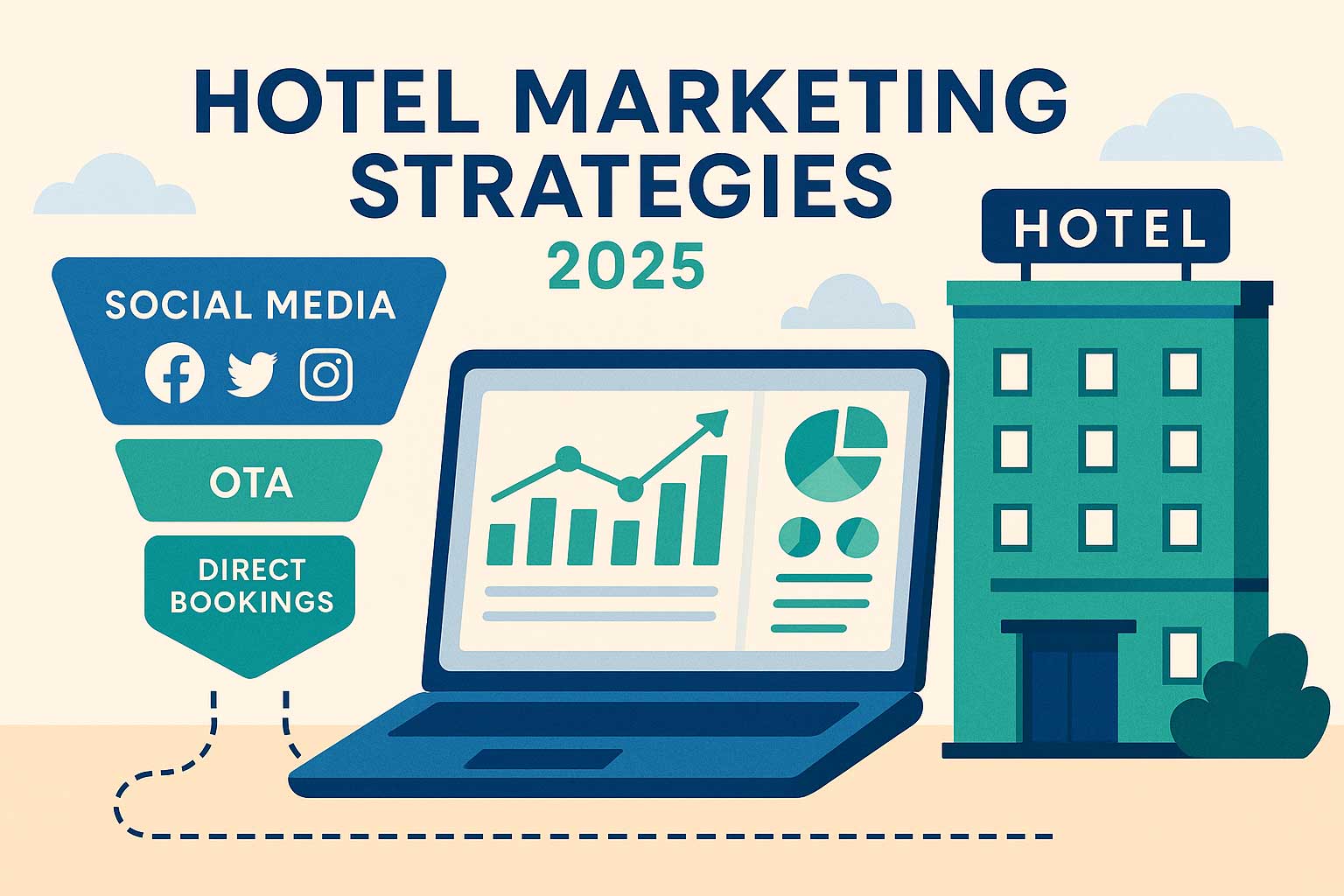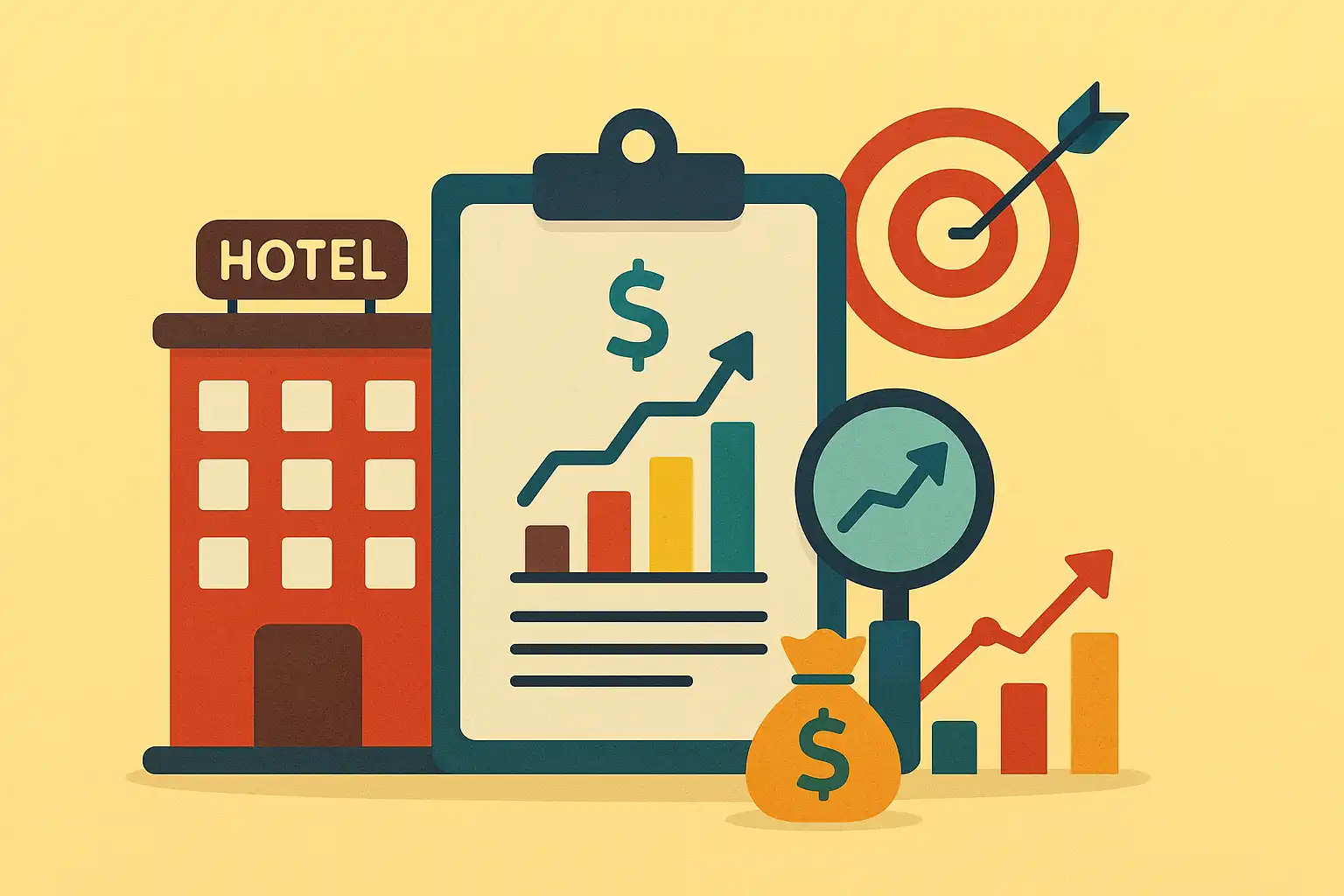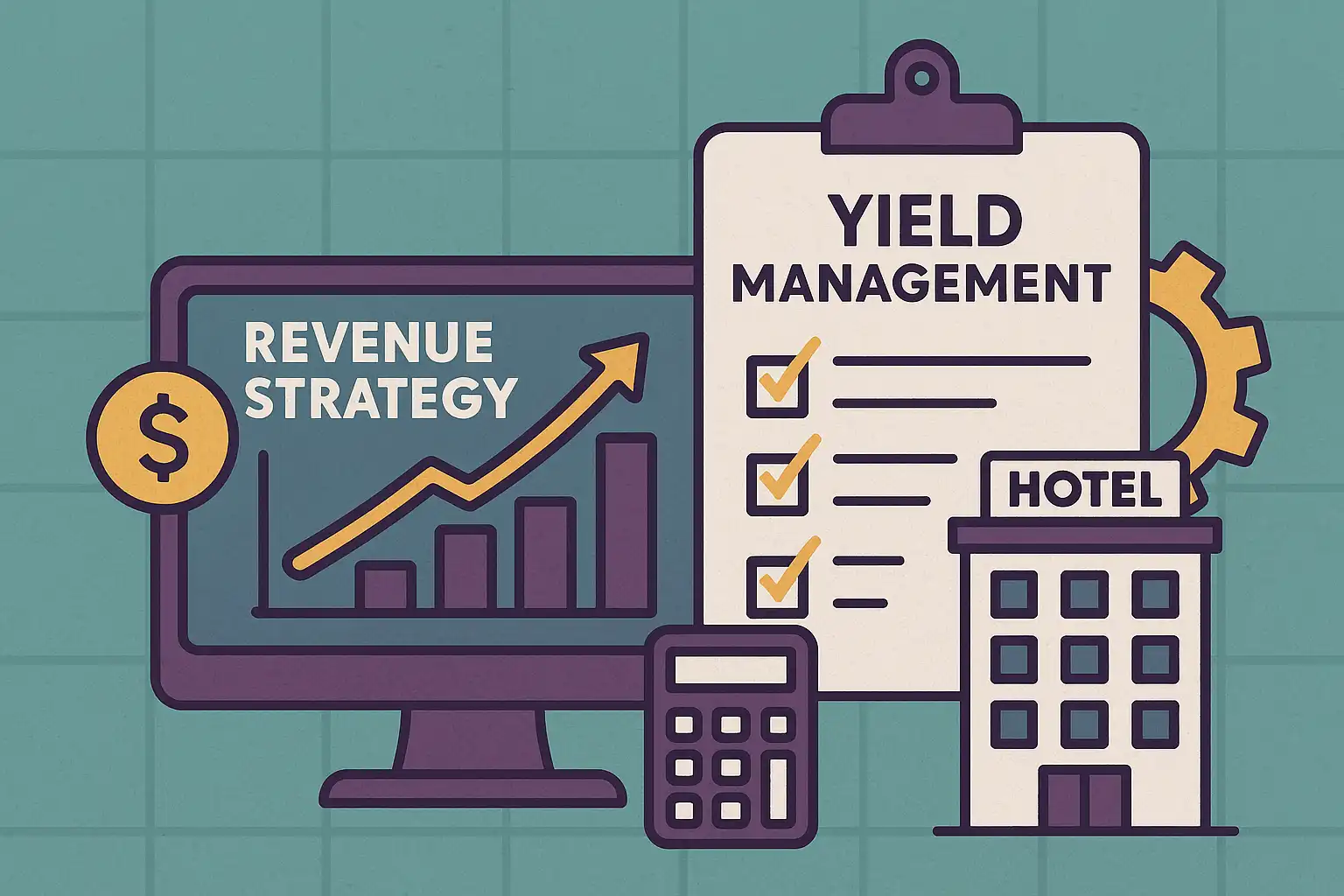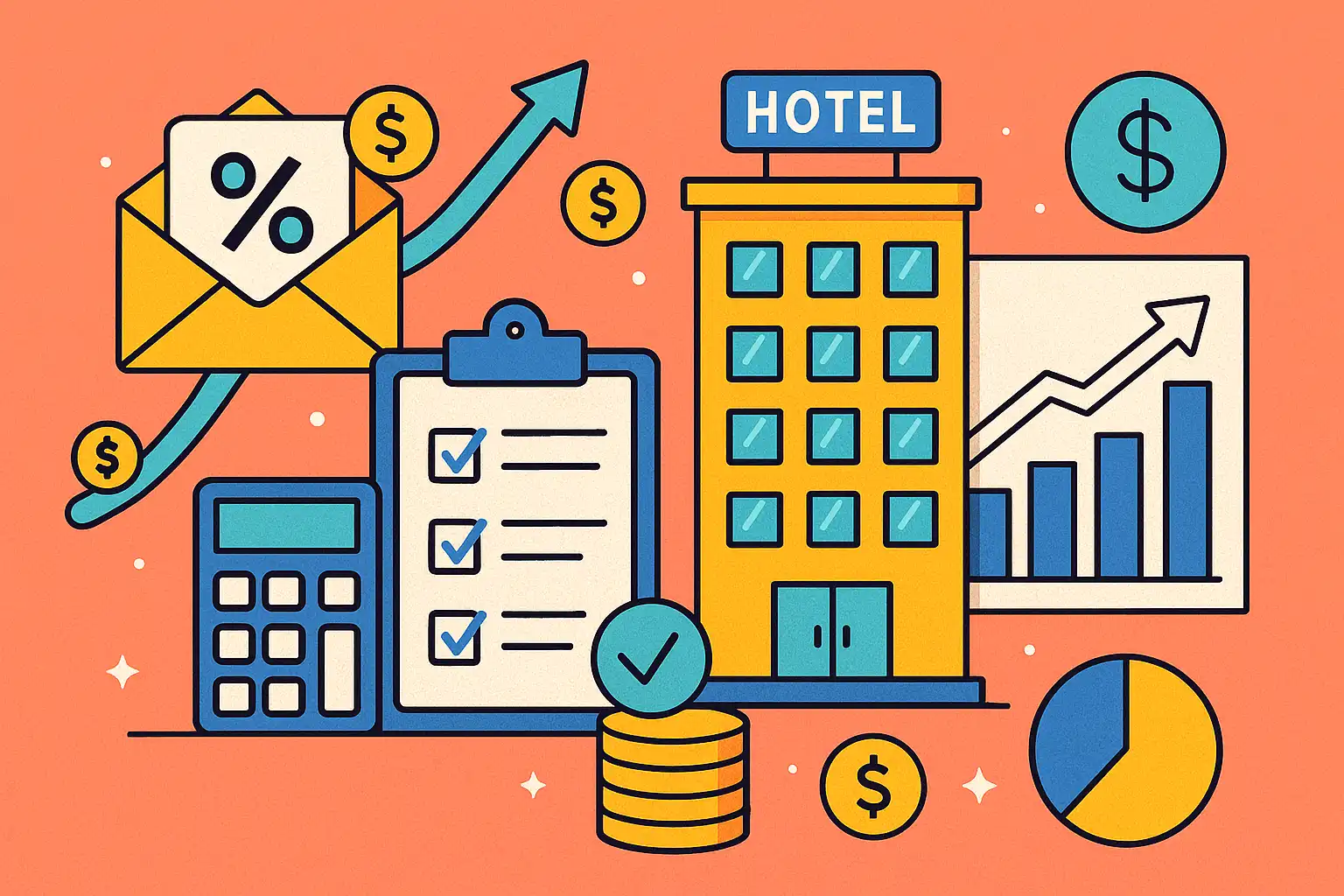Hotel Yield Management: Guide to Boosting Revenue
Oct 3, 2025
 Mika Takahashi
Mika TakahashiPopular Categories
Hotel Technology & InnovationHotel Operations OptimizationDigital MarketingIndustry TrendsRevenue ManagementHospitality Industry
Popular Categories
Trending Post

Hotel Walk Letter Template: Professional Guest Communication

Online Travel Agents: What They Are and How They Work

Hotel Security Systems: Modern Protection Solutions

Hotel Advertising: Complete Guide to Boost Bookings and Revenue

25 Hotel Marketing Strategy Ideas for 2025: Complete Guide

AI Reservation Agent: Revolutionizing Hotel Booking and Guest Experience

PMS Communication: Streamlining Property Management Through Effective Guest Messaging
Table of contents
In today’s fast-paced hospitality world, what sets successful hotels apart from the rest often boils down to one thing: how well they manage room pricing and inventory. Hotel yield management has become the secret weapon that helps properties increase their revenues by 5-15% annually compared to sticking with fixed prices. It’s a game-changer for capturing every revenue opportunity and maximizing profits.
With fluctuating demand, seasonal ups and downs, and fierce competition, the ability to adjust hotel prices dynamically based on real-time market conditions is no longer optional—it’s essential. This all-in-one guide will walk you through everything you need to know about implementing effective hotel yield management strategies that not only boost your revenue but also keep you ahead in the ever-evolving hospitality industry.

What Exactly is Hotel Yield Management?
Simply put, hotel yield management is a smart, dynamic pricing strategy designed to maximize revenue by selling the right room to the right guest, at the right time, and for the right price. Unlike traditional fixed pricing, yield management means continuously adjusting prices based on real-time shifts in demand, booking trends, and market conditions, all aimed at optimizing your Revenue per Available Room (RevPAR).
At its heart, a successful hotel yield management strategy is about finding the sweet spot between room rates and occupancy to squeeze out the maximum revenue from your hotel’s fixed, perishable inventory. Since hotel rooms can’t be saved for later, every empty room is lost money that you simply can’t get back.
Today’s yield management systems pull together a variety of data—historical bookings, competitor pricing, local events, customer segments—to make smart pricing decisions. This means you can charge more during peak times and stay competitive during slower periods by offering strategic discounts.
What sets this apart from old-school fixed pricing is the constant rate tweaking rather than sticking to seasonal, static rates. Revenue managers rely on cutting-edge algorithms and market insights to react quickly to market dynamics, ensuring you capture every possible dollar, no matter the demand scenario.
From Airlines to Hotels: The Yield Management Journey
Yield management got its start in the airline world after deregulation in the late 1970s. Airlines needed a way to stay competitive on price while still making a profit. Robert Crandall of American Airlines coined the term and pioneered techniques that brought in hundreds of millions in extra revenue.
Hotels soon saw the parallels—managing perishable inventory with fluctuating demand—and began adopting yield management principles in the late 1980s. This led to new roles like revenue managers and more systematic pricing and inventory controls.
This shift moved the industry from gut-feeling, experience-based pricing to smart, data-driven revenue management. Early hotel efforts focused mostly on tweaking room rates manually based on booking speeds and seasonal trends.
Fast forward to today, and yield management is just one piece of a bigger puzzle—comprehensive revenue management that covers all hotel revenue streams, from rooms to food, spa, events, and extras. Modern systems use AI and machine learning to make complex pricing decisions automatically, optimizing total revenue.
Yield Management vs Revenue Management: What’s the Difference?
It’s important to know the difference between yield management and revenue management as you build your strategy. Hotel yield management zeroes in on room pricing and inventory control to boost room revenue. Revenue management takes a wider view, focusing on maximizing all revenue streams throughout your hotel.
| Aspect | Yield Management | Revenue Management |
|---|---|---|
| Scope | Room revenue optimization | Total hotel revenue optimization |
| Focus | Pricing and inventory control | All revenue streams and customer value |
| Metrics | RevPAR, ADR, Occupancy | GOPPAR, TRevPAR, Total Customer Value |
| Decision Making | Room rates and availability | Integrated pricing across all services |
| Implementation | Foundation strategy | Comprehensive approach |
Think of yield management as the foundation of your revenue optimization journey—perfect for hotels just getting started. Mastering it builds the skills and confidence to expand into full revenue management, which includes dining, events, and other services.
Many revenue management systems now support both approaches, letting you start with yield management and scale up as your data and capabilities grow.

Why is Yield Management a Must-Have for Hotels?
Hotel operations have some unique quirks that make yield management especially important. Rooms are perishable inventory—if they’re not sold tonight, that revenue is gone forever. This creates a sense of urgency that other industries don’t have.
You can’t just make more rooms when demand spikes, so pricing becomes the main tool to maximize revenue. Unlike factories or retailers, hotels must make the most of their existing supply by setting smart prices.
Demand in hotels swings wildly—seasonality, local events, business travel, market trends all play a role. The hotels that can forecast demand accurately and adjust rates quickly have a huge edge.
Good yield management can boost your RevPAR by 10-20% compared to competitors, giving you a lasting advantage in profitability and market share.
Plus, travelers today expect dynamic pricing. They’re used to rates changing based on demand, so you can be more aggressive with your yield strategies without scaring off guests.
The Building Blocks of Hotel Yield Management
Demand Forecasting and Analysis
Getting your demand forecasts right is the bedrock of any yield management strategy. Revenue managers dive deep into 2-3 years of historical booking data to spot patterns and trends.
They analyze booking velocity (how fast rooms get booked), seasonal swings, and guest behaviors to build reliable forecasts.
Looking ahead, they track forward indicators like pickup reports (how bookings compare to past periods) and booking windows (how far in advance guests book). This lets them tweak prices before demand hits full throttle.
Smart forecasting also includes external factors—local events, conferences, concerts, sports, weather, and economic shifts—all integrated into models. Many yield management systems automate this by pulling in external data feeds.
Segment-specific forecasts recognize that business travelers book late and are less price-sensitive, while leisure travelers plan early and respond more to discounts. Group bookings, with their unique patterns, get special attention too.
Market Segmentation Strategy
Market segmentation helps you price smarter by recognizing that not all guests behave the same. Business travelers usually book last minute, stay weekdays, and don’t mind paying more thanks to corporate accounts.
Leisure travelers plan ahead, book weekends, and are more price-conscious, often attracted by advance purchase discounts and packages.
Groups book large blocks at negotiated rates over longer windows, so balancing group and transient demand is key.
Channel segmentation adds another layer—direct bookings usually have the highest margins, while OTAs come with commissions. Knowing the value and behavior of each channel lets you optimize pricing and marketing.
Dynamic Pricing Implementation
Dynamic pricing means adjusting rates on the fly based on how bookings are coming in, how many rooms are left, and what the market looks like.
Modern revenue management systems handle much of this automatically, but setting clear strategies and monitoring performance is still essential.
Keeping an eye on competitor pricing is crucial. Rate shopping tools help you track what others charge across channels, so you can position your prices smartly. But remember, your unique value and costs should guide your prices—not just what competitors do.
Understanding price elasticity—how changes in price affect demand—helps you test different rates and find the optimal balance between price and bookings.
Integrating your pricing with property management systems ensures your rates update everywhere in real time, keeping availability and restrictions in sync.
Inventory Control Mechanisms
Inventory control goes beyond prices. It includes managing availability to encourage the right booking patterns.
Closed to Arrival (CTA) restrictions block check-ins on certain dates but allow longer stays that start earlier, helping manage peak demand.
Stop Sell closes out availability completely for dates or room types when demand is high, protecting your premium inventory.
Length of Stay (LOS) controls set minimum or maximum stay requirements to smooth out bookings and avoid costly short stays during busy times.
Booking limits cap the number of discounted rooms per night to keep premium rooms available for last-minute, higher-paying guests.
Overbooking is a calculated risk to cover no-shows and cancellations, but must be managed carefully to avoid guest dissatisfaction. Modern systems can automate overbooking based on data.
How to Calculate Yield Management Success
The basic yield management formula is straightforward: Yield = (Actual Revenue ÷ Potential Revenue) × 100. It shows how close you are to hitting your maximum possible revenue.
For example, a 100-room hotel with a rack rate of $200 per night has a potential revenue of $20,000. If it sells 80 rooms at an average of $150, actual revenue is $12,000, making the yield 60%.
RevPAR is another key metric, calculated as Occupancy % × Average Daily Rate or Total Room Revenue ÷ Available Rooms. In this case, RevPAR = $12,000 ÷ 100 = $120.
Benchmarking against competitors using STR reports and market data helps you see how your yield stacks up.
GOPPAR (Gross Operating Profit per Available Room) adds operational costs into the mix, showing true profitability—not just revenue. This becomes more important as you expand from yield to full revenue management.

Tried-and-True Yield Management Strategies
Advance Purchase Discounts
Encourage early bookings by offering 10-30% off for reservations made 14-60 days ahead. This secures revenue early and attracts price-sensitive leisure travelers.
Non-refundable rates are a step further—deeper discounts in exchange for guaranteed bookings, reducing cancellation risk.
Optimizing booking windows means balancing early revenue with the chance of higher last-minute rates.
Target these offers primarily at leisure travelers, who plan ahead, while business travelers usually book too late to benefit.
Length of Stay Requirements
Minimum stay rules during busy times ensure high-demand nights are sold as part of longer, profitable stays. For example, requiring 2-3 night weekend stays prevents low-value one-nighters.
Shoulder night strategies encourage guests to extend stays into slower days, improving occupancy.
Maximum stay limits prevent long-term bookings that block higher-rate short stays during peak times.
Bundling stays with packages (meals, spa, activities) adds value and encourages longer visits.
Last-Minute Pricing Tactics
Same-day discounts target spontaneous travelers with mobile-only or flash sale rates to fill distressed inventory without hurting advance sales.
Walk-in pricing lets front desk staff quote flexible rates based on current demand, capturing last-minute business.
Deep discounts on unsold rooms can be better than empty rooms but must be controlled to protect your brand.
Channel-specific offers via social media or email reach last-minute bookers without broadly advertising discounts.
Seasonal and Event-Based Pricing
Charge premium rates during peak seasons like summer or holidays—sometimes 2-4 times higher than low season.
Event-driven pricing taps into local happenings like conferences or concerts to boost rates proactively.
Shoulder seasons get moderate pricing, often with value-added packages that keep guests happy while maintaining revenue.
Low season focuses on competitive rates plus perks to maintain market share and cash flow.
Leveraging Technology and Automation
Modern revenue management systems like IDeaS, Duetto, and Atomize analyze tons of data—historical bookings, competitor rates, market trends, external factors—to recommend optimal prices automatically.
Channel management platforms help distribute these rates across OTAs, GDS, and direct channels, ensuring rate parity and inventory control.
Competitive intelligence tools keep you informed about what others charge, helping you stay ahead.
Business intelligence dashboards pull data from multiple systems to give you a clear picture of how your yield management is performing.
Cloud-based software has made these powerful tools accessible to smaller hotels, leveling the playing field with big chains.
Tracking Success: Key Performance Indicators (KPIs)
RevPAR remains the go-to metric for yield management success, blending occupancy and rate into one number to track your progress and benchmark against competitors.
ADR shows how well you’re capturing premium rates during busy times and staying competitive during slow periods.
Occupancy percentage reveals how well you’re filling rooms and where pricing or marketing tweaks might help.
GOPPAR takes it further by factoring in costs and ancillary revenue, giving you a true profitability picture.
Other useful KPIs include yield percentage, booking pace, length of stay, and channel performance to spot opportunities and fine-tune your approach.
Your Roadmap to Implementing Yield Management
Start with a solid data foundation—analyze 12-24 months of booking data to spot patterns and seasonal trends.
Next, identify your competitive set and start tracking their rates regularly to understand your market position.
Develop basic segmentation and pricing strategies like advance purchase discounts and length of stay rules.
Then integrate technology—implement revenue management systems, channel managers, and train your team on the new processes.
Measure performance continuously and refine your strategy. Most hotels see revenue improvements within 3-6 months of starting yield management, with gains growing over time.
Overcoming Common Challenges
Data quality is often the biggest hurdle. Make sure your property management system is set up correctly and your data is clean and reliable.
Training is key—everyone from revenue managers to front desk staff needs to understand how yield management works and their role in it.
Technology integration can be tricky. Work closely with your vendors and test thoroughly to ensure smooth data flow and automation.
Be ready to adapt quickly to market changes, economic shifts, or unexpected events with flexible strategies.
Finally, communicate pricing policies clearly to guests to avoid confusion or dissatisfaction with dynamic rates.
Hotel yield management is a vital skill for anyone serious about revenue optimization in today’s hospitality landscape. Hotels that master these techniques and embrace dynamic pricing consistently outperform competitors with better RevPAR, stronger profits, and a more solid market position.
Moving from static pricing to dynamic yield management shows the industry’s shift toward data-driven decisions, advanced technology, and strategic execution. With commitment to data quality, training, technology, and ongoing improvement, your property can see 5-15% revenue growth in the first year alone.
Looking ahead, yield management will keep evolving with more automation, personalization, and integration with broader revenue strategies. Starting strong today puts you in the best position to stay competitive and thrive in the future of hospitality.
